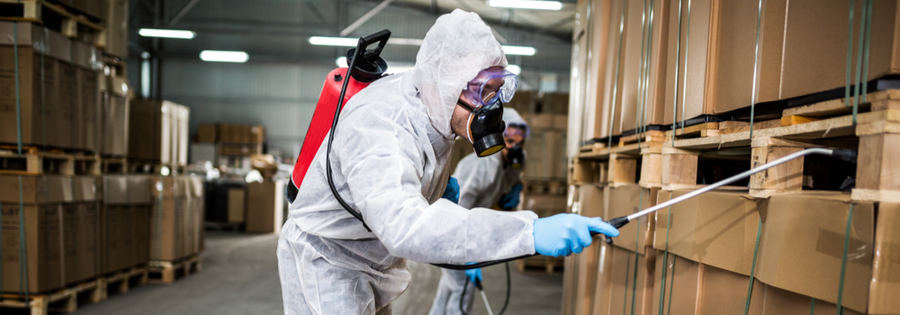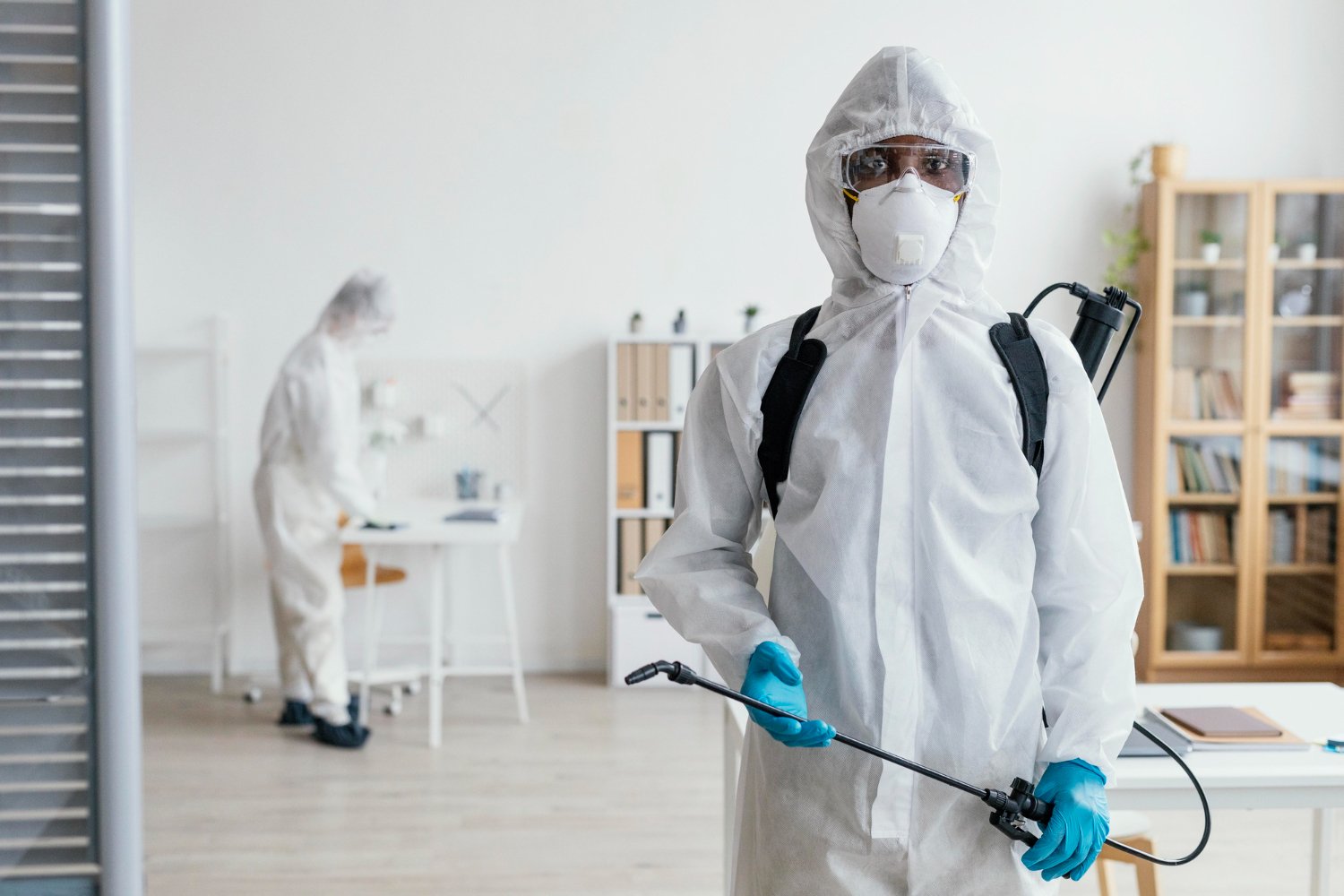Reliable Pest Control Chicago: Trusted Professionals for Your Home or Organization
A Comprehensive Overview to the Different Types of Pest Control Methods
With the myriad of parasite control techniques readily available, it can be overwhelming to locate the most efficient solution for a certain pest issue. In this comprehensive guide, we will discover these different types of bug control approaches, offering insights right into their applications and advantages. By the end, you will have a more clear understanding of which approach might be the best fit for your parasite control needs.
Chemical Bug Control Approaches

One typical type of chemical pest control is pesticides. Pesticides target certain bugs, such as mosquitoes, termites, or ants, and can be used both indoors and outdoors.
Another kind of chemical pest control is rodenticides. These are chemical materials created to manage populations of rats, such as rats and mice. Rodenticides are commonly used in lure type, which attracts the rats and after that kills them after consumption. They are typically used in farming settings, along with in property and industrial buildings (Customized pest control solutions Chicago).
Herbicide, likewise recognized as herbicides, are one more sort of chemical insect control method. Herbicides are designed to uniquely eliminate undesirable plants, called weeds, without creating damage to preferable plants. They are frequently used in farming, landscape design, and horticulture to control the development of unwanted plants.
While chemical pest control techniques can be highly efficient in eliminating bugs, it is necessary to utilize them sensibly and comply with safety standards. Overuse or misuse of chemical pesticides can have adverse effect on human health and wellness and the setting. It is vital to use these methods properly and take into consideration different pest control methods whenever feasible.
Biological Pest Control Techniques
Organic bug control techniques include the usage of living microorganisms or all-natural materials to take care of and control pest populations. Unlike chemical methods, which commonly count on artificial chemicals, organic control approaches make use of the natural opponents of bugs to control their populaces. This technique is taken into consideration even more environmentally friendly and sustainable, as it decreases using damaging chemicals and lessens the danger of pesticide resistance.
One commonly utilized organic insect control technique is the intro of all-natural killers or bloodsuckers. Ladybugs are introduced to regulate aphids, while particular wasp types are launched to target caterpillars. These killers and bloodsuckers feed upon parasites, reducing their numbers and avoiding infestations.
Another organic control method is making use of microorganisms. Specific bacteria, infections, and fungis can be employed to contaminate and kill details insects. The bacterium Bacillus thuringiensis is generally made use of to regulate caterpillars, as it creates toxins that are dangerous to her explanation these insects.
Organic control techniques can likewise involve the usage of pheromones or all-natural compounds that disrupt the breeding patterns of pests. By disrupting their recreation, these methods assist to decrease pest populaces over time.
While organic bug control techniques are usually efficient, they might need longer durations to achieve desired outcomes compared to chemical techniques. In addition, cautious factor to consider should be given to the choice and launch of natural adversaries to prevent unintentional damage to helpful microorganisms or ecosystems.
Physical Pest Control Techniques
To successfully manage and regulate pest populaces, alternate insect control methods recognized as physical insect control approaches are utilized. Another physical parasite control technique is the installation of fencings or walls to maintain bigger insects, such as deer or bunnies, out of gardens or farming fields. Physical pest control techniques are an ecologically friendly option to chemical pesticides, as they do not rely on the usage of hazardous chemicals.
All-natural Insect Control Approaches
All-natural pest control techniques offer a lasting and environmentally friendly strategy to handling and getting rid of insects. These techniques focus on the use of all-natural substances and biological agents, lessening the need for chemical pesticides that can hurt the setting and human health. Among one of the most typical natural insect control approaches is biological control. This pest protect includes presenting all-natural killers or parasites to prey on or parasitize the pests. As an example, ladybugs are often introduced to yards to control aphid populaces. One more all-natural approach is using repellents obtained from plants. Specific plants, such as marigolds, lavender, and pepper mint, produce fragrances that repel bugs like insects, flies, and ants. In addition, social control practices can be employed to avoid and take care of pest infestations. This includes appropriate cleanliness, normal upkeep, and advertising biodiversity in the garden. For instance, turning crops, eliminating yard particles, and motivating all-natural killers can aid protect against the build-up of pests. By embracing these natural insect control methods, individuals and areas can effectively manage pests while minimizing the negative effect on the setting and human wellness.
Integrated Parasite Administration (IPM)
Integrated Pest Administration (IPM) is a comprehensive and methodical strategy to pest control that integrates numerous techniques and methods to effectively handle parasites while reducing making use of chemical pesticides. IPM intends to keep pest populations listed below the financial injury degree by utilizing a combination of cultural, organic, and chemical control methods.
Cultural control techniques entail changing the atmosphere to make it much less desirable for bugs. This can include practices such as crop rotation, appropriate hygiene, and using immune plant selections. By developing undesirable problems for bugs, cultural control techniques can dramatically lower pest populations.

Chemical control techniques are used as a last option in IPM. They include the targeted and judicious use pesticides to manage parasite populaces. Unlike traditional pest control approaches, IPM aims to reduce making use of chemical pesticides by employing different methods.
Integrated Insect Management (IPM) is an aggressive method that focuses on lasting parasite administration rather than depending only on responsive measures. By incorporating multiple control approaches, IPM offers an extra sustainable and eco-friendly approach to pest control.
Verdict
To conclude, this post has supplied an extensive review of the different sorts of insect control methods. It went over chemical, biological, physical, and natural parasite control methods, along with the integrated insect monitoring strategy. By comprehending these different approaches, pest extermination service individuals can make educated decisions on which pest control technique is most ideal for their specific requirements and choices. Effective insect control is important in keeping a healthy and pest-free atmosphere.